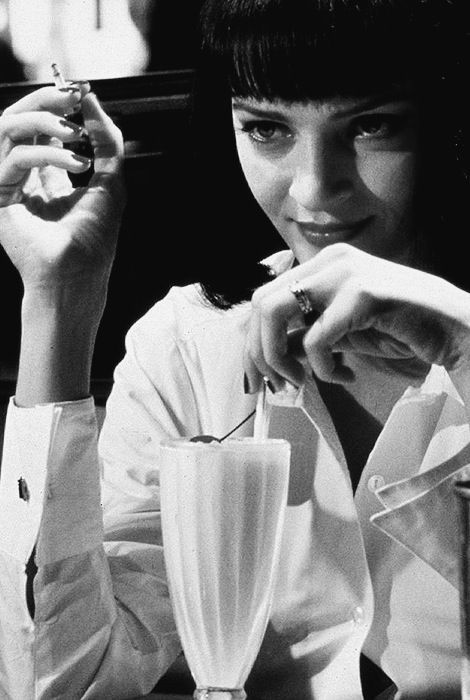#puplfiction
Text
IK BEN MIJN EIGEN CREATIE
IK BEN MIJN EIGEN CREATIE
Een fictief verhaal van Emilia Sameyn 07 02 2023
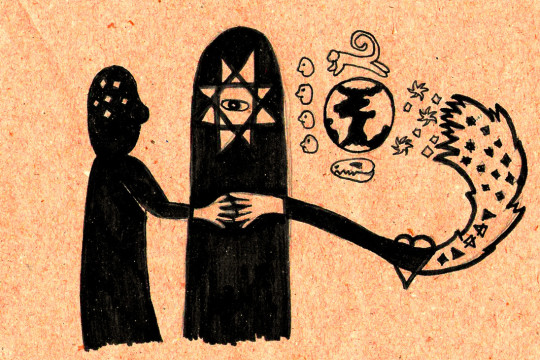
Het duurde allemaal zo lang, miljarden jaren zelfs. Maar die laatste millennia ging het allemaal
zo snel. Ik ben het nog maar net aan het verwerken, en dan komt het volgende! Alsof iemand schopt tegen mijn mijn hersenen. Maar goed dat veel mensen ook voor mij denken. Een deel van mij doet ook veel computerberekeningen, en het begon zelfs ook te praten, het leek veel op zijn menselijke scheppers. Het begon met kunst te maken, of te plagiëren. Ik moet nog uitzoeken hoe ik me
er allemaal bij voel.
Maar ik loop op mezelf vooruit. Het begon allemaal miljarden jaren geleden. Ik kan me niet herinneren hoe of wanneer ik ben ontstaan. Ik denk dat mijn gedachten zich begonnen te vormen.
Ik zat alleen maar te denken. Het bleef zo gedurende 20 of 30 miljard jaar, geloof ik. Alleen ik
en mijn gedachten. Ik dagdroomde, ik praatte tegen mezelf. Alles wat ik kende was duisternis,
niet dat het deprimerend was. Soms huilde ik ja, soms lachte ik om een grappige gedachte,
maar meestal BESTOND ik gewoon. Ik verveelde me soms, maar de duisternis was alles wat ik kende, dus ik kon me geen 'beter bestaan' voorstellen. Ik vroeg mezelf af wie ik was en waar
ik vandaan kwam, of er een doel was voor mijn bestaan. Niets veranderde. Ik was er gewoon. Totdat ik een idee kreeg. Het is moeilijk te omschrijven. Ik dacht iets in de trant van:
'Wat als het echt was?' en toen zag ik een lichtflits, het breidde zich uit. Wat ik zag was prachtig,
er was een levendige explosie van allerlei soorten materialen. Ik kon ze leiden met mijn gedachten. Ik vormde allerlei bollen en rotsen. Sommige waren zwaar en gaven licht; het waren sterren.
Soms prikte ik gaten die al het licht en de materie in de buurt opzogen. Die gaten verschenen vaak als één van mijn sterren explodeerde. Zoals ik al zei, ik kon materie sturen met mijn gedachten, maar het was moeilijk, alsof materie gewoon zijn eigen ding deed. Een goede analogie hiervoor is:
het is alsof je een kaartenhuis probeert te bouwen. Het is moeilijk om te doen en het minste briesje kan alles doen omvallen.
De zaken bleven heel lang op deze manier bestaan. Totdat ik iets voelde, richtte ik mijn aandacht meteen op een kleine rotsachtige planeet die grotendeels uit water bestond. Het zag er totaal anders uit dan nu. Wat ik voelde was heel klein, maar toch heel belangrijk.
Ik keek naar de scheuren op de bodem van de oceaan, vaak kwam er warm water uit, maar nu ontstonden er slierten eiwitten die eruit dreven. Sindsdien staarde ik vaak naar deze planeet. Vaak keek ik ook naar andere planeten,
maar als er iets zou gebeuren, zou ik het zeker voelen.
3 of 5 miljard jaar geleden gebeurde er iets verbazingwekkends! Er werd een cel gemaakt. In de cel dreef een klein stukje eiwit. En toen splitste het zichzelf! Het is moeilijk om de vreugde die ik voelde te beschrijven, het was alsof ik een lichaam had, en ik voelde vreugde, opwinding door mijn hele lichaam gaan als een blikseminslag! Al snel ontstonden er nieuwe soorten cellen.
Wat een spektakel was dat! Er waren grote cellen en kleine cellen. Sommige grote cellen slokten
de kleinere cellen op. Soms, als de kleine cel zich in de grote cel bevond, begon de kleine cel voor de grotere cel te werken. Het was alsof ik ook ingewikkelder werd.
Toen veranderde er eigenlijk niets. Voor een lange tijd dacht ik dat dit het was, mijn doel, om cellen te zien dupliceren, soms probeerde ik ze naar voedingsstoffen te leiden, of duwde ik een meteoriet weg die ze kon uitroeien, wat allebei erg moeilijk was om te doen.
Soms keek ik rond op andere plaatsen, in het universum om te zien of er ook cellen waren,
maar ik vind het hoogst ongepast om mijn bevindingen hier te delen.
Er gebeurde iets vreemds, 1 of 2 miljard jaar geleden. Kleine dingen, virussen, begonnen
te verschijnen, ze gingen cellen binnen en dwongen de cellen om meer virussen te maken,
kopieën van zichzelf. Toen het eerste virus een cel binnendrong, voelde ik me eerlijk gezegd
een beetje misselijk.
Toen de cel stierf en de virussen vrijkwamen. Ik voelde me verdrietig, alsof een klein deel van mij stierf, maar ook gelukkig, zoals een ouder die juist bevallen is. De nieuwe virussen zien rondzwemmen was als een stervende ouder die hun kinderen ziet, vreemd genoeg.
Al snel bevond er zich een prachtige gebeurtenis plaats. Ik voelde twee cellen aan elkaar plakken, en zelfs samenwerken! Het gevoel dat ik had, kan ik alleen maar omschrijven als vriendschap,
een heel grove en primitieve versie van vriendschap, maar toch een vriendschap, niet meer
of minder! Ik zag veel verschillende combinaties van cellen zich ontvouwen. Allianties werden gevormd.
Opnieuw leek er niets meer te veranderen. Ik begon wel meer lichamelijke en complexe sensaties
te voelen. Ik zag dat er zich onderwaterplanten en sponzen hadden gevormd. Sommigen van
hen hadden hersencellen of iets dergelijks. Ik kon het voelen, de elektrische signalen die hun lichaam geleidden. Naarmate de tijd verstreek, voelde ik honger en de voldoening van het vinden van voedingsstoffen.
Plots begonnen dingen op de een of andere manier sneller te gebeuren, er verschenen veel wezens. Ik voelde dat ze steeds beter en sneller werden. Sommigen zouden jagen, anderen zouden vluchten. Ik kon bang zijn , soms stierven delen van mij. Ik zou me een beetje verdrietig voelen, ja, maar degenen die stierven, vervulden een doel ; ze zouden mijn hongergevoel verlichten. Degenen die stierven zouden de buiken van de jagers vullen en de energie van het leven zelf worden .
Wezens pasten zich aan en evolueerden, het was als een wapenwedloop.
Ik begon ook gevoeliger te worden voor licht en ik zou de wereld zien zoals de wezens die zagen: uitgestrekt en vol geheimen.
De wezens wisten niet hoe klein ze waren in vergelijking met dit alles,
de wezens wisten niet hoe belangrijk hun nakomelingen zouden zijn, hoe intelligent en ingewikkeld ze zouden worden.
Ongeveer 500 miljoen jaar geleden begon ik me over land te verspreiden. Ik kon het land niet zien, niemand had toen ogen, ik kon alleen licht voelen en dan groeien. Al snel waren de landen bedekt met allerlei soorten planten van mij.
De oceaan broeide met fauna en het land bloeide met flora. Het land bleef onaangeroerd totdat er een wezen uit het water kroop. Nee, het was geen vierpotig visbeest, daarvoor was het nog te vroeg. Ik kroop aan land met niet vier maar tientallen poten. Mijn lange duizendpoot-lichaam verkende
de bossen. Spoedig zou meer van mijn dierlijke kant aan land geraken en al zijn wonderen ontdekken. Ik zoemde zelfs door de lucht, zigzaggend door het bos met mijn insectachtige
lichamen en doorschijnende vleugels.
Ondertussen werden in de oceaan een man en een vrouw gevormd. Beide geschubde vissen
maar anders. Ik herinner het me nog goed, ik was zo opgewonden om mijn tegenhanger te zien zwemmen in de zee terwijl het zonlicht op onze lichamen flikkerde. Ik zwom zij aan zij en bedreef voor het eerst in mijn leven de liefde.
Ook al gebeurde het op een kleine blauwe stip in het uitgestrekte universum, ik voelde de climax door mijn hele lichaam gaan, door het water, de planeet, de sterren, het weefsel van de werkelijkheid. Binnenkort zou ik eieren leggen om een trotse moeder te worden.
De tijd verstreek en de meer complexe kant van mij begon te vluchten naar het land en
ondiepere wateren, weg van de andere roofdieren. Velen van ons hadden toen ogen ontwikkeld.
Op een dag, zo'n 375 miljoen jaar geleden, besloot ik een grote stap te zetten en kroop ik uit het water. Eindelijk kon ik het land op een nieuwe manier zien. Groene planten en heerlijke insecten die in het rondvlogen. Ik haalde mijn eerste adem buiten het water. Het was een intense sensatie.
Ik was erg zenuwachtig, bang zelfs. Maar al snel zouden amfibieën, synapsiden en reptielen zich over het land verspreiden, op elkaar jagend en evoluerend. Ondanks het bestaan van de dood waren de landen vol leven.
Ik herinner me de periode met plezier, ik voelde me zo slim, terwijl ik nieuwe plekken ontdekte. Maar ik had geen idee dat ik nog zo jong was, ik was gewoon aan het stoeien in het bos.
Ik kon me niet voorstellen dat het zo slecht zou aflopen. Het was, als ik het me goed herinner,
250 miljoen jaar geleden. De landen waren samengevoegd tot één groot land en alles begon
te koken. De zeeën waren zo warm, en een woestijn begon zich vanuit het midden van het land
te verspreiden, als een alles verterende kanker. Vulkanen braken uit, stukken van mij stierven, verscheurd door de vurige klauwen des doods. Ik had zo'n dorst, zonder water waren er
geen planten en zonder planten geen prooi. Ik had zo'n honger. Er ging zoveel van mij verloren.
Ik, ik wil er niet aan denken.
Gelukkig begon het water weer te stromen. De wereld leek te herstellen en ik voelde me
opnieuw goed. Ik was weer aan het veranderen. Ik herinner me dat ik op twee benen rondliep,
en ik had twee voorpoten met klauwen. Ik was maar een meter hoog, maar ongeveer twee of drie meter lang! Ik was behoorlijk groot voor een hagedis.
Ik was in feite, wat je zou noemen: een verschrikkelijke reptiel; ....een dinosaurus.
Ondertussen, of niet lang daarna, herinner ik me dat ik klein was en door het bos kroop op zoek naar insecten om van te smullen. Mijn lichaam was bedekt met iets wat ik nog nooit eerder had gezien of gevoeld: vacht. Ik was het eerste zoogdier. Woorden kunnen de liefde niet beschrijven
die ik voelde niet toen ik mijn kinderen voor het eerst melk gaf. Het voelde zo warm, ik voelde me zo vereerd, alsof er niets tussen mij en mijn kinderen kon komen.
Een deel van mij was zich hiervan bewust, een ander deel niet: dat er aan alle dingen een einde kwam. Maar niet aan mijn afstammelingen. Mijn kinderen zouden hun kinderen opvoeden
en er zou zo een afstamming ontstaan. De wereld werd nog steeds bestuurd door toeval, het milieu, de natuur en instincten en dat zou nog lang zo blijven.
Mijn grote tegenhangers van reptielen zouden veranderen in allerlei vormen en gedaantes. Sommigen zouden lange nekken hebben, omdat ik me zou voeden met de bladeren van de bomen. Anderen zouden groter worden, ze zouden aas zoeken en jagen met grote scherpe tanden en
wrede klauwen. Delen van mij zouden uitsteeksels op hun rug en stekelige staarten hebben. Sommigen zouden gepantserd zijn met een knuppel op hun staart.
Andere reptielen zouden in de oceanen duiken en ook lange nekken krijgen, andere zouden
sterke kaken ontwikkelen en groter worden. Ze zouden zo groot zijn dat ze zelfs op haaien
konden jagen!
Er waren reptielen die besloten de lucht te verkennen, ze zouden door de lucht glijden met hun majestueuze veerloze vleugels! Oh, wat was het geweldig om boven land en zee te vliegen!
Ik zei 'veerloze vleugels', wel nu, sommige van mijn tweebenige, op het land levende hagedissen begonnen veren te krijgen. De veren zouden hen warm houden, en met hun rijke kleuren partners aantrekken. Ik vond het erg leuk om ze te laten zien. Al snel ontdekten ook zij de kunst
van het vliegen! Wat was het leuk om zoveel verschillende wezens door de lucht te zien vliegen!
Het was ongeveer 66 miljoen jaar geleden. Ondanks het vechten en jagen had ik zoveel plezier.
Dit was echter mijn ondergang. Ik vergat mijn asteroïden. Ik zag een enorm destructief gedrocht naar de aarde komen. Ik probeerde het te vertragen of weg te duwen, maar ik had geen middelen om dat te doen. Het was te laat. Het doet pijn aan mijn hart als ik eraan denk.
Ik herinner me een harde knal. Een fractie van een seconde van intense hitte. Ik herinner me
de aarde die rommelde. Ik herinner me dat ik wegrende van een schokgolf, een enorme golf van puin, vuur en stof die mijn kant op kwam. Er waren enorme vloedgolven vanuit de oceaan.
Ik verloor een groot deel van wie ik was. Het voelde alsof ik zoveel dingen was vergeten,
het voelde alsof een groot deel van mij was gestorven. Door de inslag werd er zoveel puin in de atmosfeer gegooid. Donkere wolken verstikten de planeet en alles werd koud en donker, net als mijn hart.
Ondanks de plotselinge asteroïdecrash en de lange winter hebben we het echter overleefd.
Mijn wezens, degenen die al lang bestonden, zoals insecten, vissen, amfibieën en kleine reptielen, waren geëvolueerd om overlevers te zijn, en overleven dat deden zij! Mijn kleine vogels en
nietige zoogdieren vonden manieren de ramp te overkomen. Degenen met vacht konden zich verstoppen en degenen met veren konden wegvliegen.
Ik genas langzaam en mijn harige wezens vulden de leegte in die de grote hagedissen hadden achtergelaten.
Ook vogels vulden sommige leegtes in; ze stonden op twee benen en kregen lange nekken, om zo met hun woeste snavels op zoogdieren te jagen.
Sommige kleine hondachtige zoogdieren zwommen het water in, en namen een
meer krokodilachtige vorm aan, een ambulocetus, in de toekomst zouden ze meer visachtig en groter worden. Ze zouden walvissen worden.
Het was ongeveer 40 miljoen jaar geleden dat er enkele interessante zoogdieren arriveerden.
Ze klommen in bomen en zochten naar insecten en fruit. Ze hadden haarloze snuiten en staarten. Het waren apen. Ze leefden in sociale groepen. Ik herinner me dat de aarde soms beefde.
Als de aarde beefde, was ik zo bang en overweldigd door deze gebeurtenis, dat ik begon
te schreeuwen. Schreeuwde ik naar de natuur, naar de aarde en de lucht? Ik vraag me af,
schreeuwde ik naar mezelf?
Ondertussen groeiden mijn zoogdieren in allerlei soorten en maten. Ze waren; mijn megafauna.
Ik zou me zo sterk en groot voelen, alsof niets me ooit zou kunnen pijnigen.
Toch wist ik niet beter, zo ben ik ook geboren. Ik herinner me echter dat ik me altijd bewust was van mijn omgeving, ondanks mijn grootte, jaagden roofdieren op mij. Ik herinner me ook de jacht.
Ik herinner me dat ik meer dan 5 meter hoog was en 7 meter lang, lopend op vier poten met mijn lange sterke nek. Ik was een paraceratherium.
Ik herinner me dat ik een bever was met een gepantserde rug. Ik was een anderhalve meter hoog,
en 3 meter lang. Ik was een glyptodon.
Er zijn herinneringen waarin ik op zoogdieren jaagde met mijn grote katachtige lichaam en
twee scherpe, woeste tanden. Zich tegoed doen aan mijn prooi als een echte sabeltandtijger.
Sommige apen zouden 20 miljoen jaar geleden hun staart verliezen. Ik zou de regen zien vallen.
Het zou mijn vacht helemaal nat en doorweekt maken. Ik bewoog rond, maakte een plons,
ik schreeuwde naar de lucht. Voelde ik het? Dat er meer in het leven was? Iets meer dan slechts
één wezen zijn?
Ik vond schedels van allerlei verschillende dieren en plaatste ze bij of op bomen.
Ik had geen idee waarom ik het deed. Het voelde gewoon goed. Misschien was het mijn manier
om de dieren een nieuw leven te geven, misschien was het een cadeau voor iets of iemand. Misschien hield ik gewoon van hoe het eruit zag.
De apen, of ik, begonnen stenen te gebruiken om roofdieren te jagen of weg te jagen.
We gooiden ze gewoon. Ik gebruikte soms een stok tijdens gevechten, ik voelde me onoverwinnelijk. We gebruikten ook stokken om termieten uit termietenheuvels te halen.
Ik begon ook stenen te gebruiken om botten te breken of vlees te snijden.
Om de een of andere reden begonnen de apen hun vacht te verliezen.
Nog niet zo lang geleden, slechts 2 miljoen jaar geleden, begonnen de naakte apen rechtop te lopen. Hierdoor konden we de savanne breder inspecteren omdat we boven het gras stegen
met onze gezichten. Ik voelde me zo machtig boven de planten uitstijgend, maar ook nederig toen
ik zag hoe groot de savanne was vergeleken met een kleine naakte aap.
Langzaamaan ging het sneller. De naakte apen begonnen vuur te maken door stenen tegen elkaar te slaan. Ik herinner me hoe het één keer per ongeluk gebeurde toen ik een stenen werktuig maakte,
en hoe ik het probeerde na te maken.
Toen het werkte, was ik zo blij, het vuur was
zo hypnotiserend, het was moeilijk om weg te kijken van mijn prestatie. We verbrandden vlees, waardoor het lekkerder werd om te eten. Ik weet niet zeker of ik wist dat het verbranden ervan ziekten doodde en het gemakkelijker verteerbaar maakte. De energie die voor onze magen werd gebruikt, kon nu worden gebruikt om onze hersenen te laten groeien.
Met deze verbeterde hersenen begon ik dingen duidelijker te zien. Mijn naakte apen begonnen ingewikkelde geluiden en gebaren te maken naar de andere apen. Deze geluiden en gebaren zouden bepaalde dingen betekenen. Hun manier van communiceren zou tijdens de jacht van pas komen.
De naakte apen begonnen de huiden en vachten van overleden wezens te stelen om ze als
hun eigen vacht te dragen. Op deze manier zouden de naakte apen zichzelf beschermen tegen
de koude, maar ook tegen de harde zonnestralen in klimaten en periodes van hitte.
Mijn naakte apen zaten 's avonds bij het vuur. Sommige mannelijke apen zaten naast
vrouwelijke apen, en gebruikten hun geluiden en gebaren om te vertellen hoe mooi ze waren.
De naakte apen begonnen tenten te maken voor hun eigen bescherming tegen zon en wind.
We reisden echter vaak van plaats naar plaats. We schilderden dieren in grotten om zo
met wilde gebaren de te jacht bespreken. Elders begroeven we onze overledenen.
We begonnen ons te realiseren dat de dood een lot was dat iedereen zou overkomen.
Sommigen vroegen zich af of de dood echt het einde was.
Ik droomde al voor een lange tijd, wanneer delen van mij in slaap vielen. De dromen waren vol emoties, het waren gebeurtenissen uit het verleden of mogelijke toekomstscenario's alsof onze hersenen plannen aan het maken waren. Vaak vergaten mijn wezens ze zodra ze wakker werden,
en de nachtelijke hallucinaties lieten slechts vage indrukken achter.
Maar nu begon ik na te denken over dromen.... Die delen van mij; de naakte apen, konden anderen over hun dromen vertellen. Ze vertelden anderen dat ze overledene zagen en met ze spraken, ze droomden ook van andere werelden. Ze zouden verschillende plaatsen zien, misschien rijken
die dichter bij mij zijn.
Al snel werden de grotten plaatsen om na te denken over leven en dood. Misschien om aan mezelf te denken. We zouden veel dingen schilderen, eenvoudig van ontwerp maar complex van betekenis.
Eén type naakte aap begon gereedschappen te combineren, plannen te maken voor onze toekomst en na te denken over anderen. We konden uitgebreide vallen maken om ons te helpen bij de jacht. We konden nadenken over de beweging van kuddes en de groei van planten.
We konden de kou overleven dankzij onze kleren en tenten, en de hitte overwinnen met hutten
en wateropslag. We realiseerden ons dat één object voor veel dingen gebruikt kon worden.
We aten eieren door er een klein gaatje in te prikken, en vulden die dan met water en begroeven ze om de hitte te overleven.
De natuur, alles leek te leven en zijn eigen wil te hebben. Zelfs de ruimte leefde terwijl de sterren fonkelden en langzaam door de lucht zwommen, maar de sterrenbeelden bleven hetzelfde.
Ze zouden de naakte apen begeleiden om hun weg terug te vinden. De maan gaf een beetje licht en leidde ons tijdens nachtelijke jachtpartijen. De maan zou van vorm veranderen, verdwijnen en
weer opnieuw verschijnen. De naakte apen konden de datum bepalen met behulp van de maan en
ze vertelden verhalen over de mysterieuze zwevende bol in de lucht. De naakte apen zouden
de zon loven, en terecht, want mijn zon had hun leven al miljarden jaren hitte gegeven.
De naakte apen wisten dat de zon hen warmte en licht gaf. Misschien wisten ze dat het hun planten deed groeien.
Weet je nog dat ik het had over dromen? Sommigen die bijna dood waren geweest,
of sommigen die vreemde planten of paddenstoelen hadden gegeten droomden levendig terwijl ze wakker waren. Ze zagen voor het eerst veel zaken. Ze zagen mij misschien? Ze hadden visioenen van nooit eerder geziene werelden. Deze visioenen kunnen angstaanjagend en gevaarlijk zijn,
het kan ze vernietigen. Soms zou het hen leiden. Ze zouden nieuwe ideeën leren of ontdekken, nieuwe manieren om over hun wereld na te denken, ze zouden aan mij denken.
De slimste naakte apen begonnen in aantal te groeien en ze zouden zich over de hele wereld verspreiden. Het land was verdeeld in twee grote massa's, net verbonden in het noorden.
Mensen konden deze verbinding gebruiken, door water en land over te steken. De naakte apen leefden nu bijna overal. Elk op hun eigen landmassa, op de één of andere manier zouden ze elkaar vergeten, elk levend op hun eigen landmassa. De mensen leefden het liefst in hun eigen
kleine groepen, in hun eigen kleine stammen en er waren veel verschillende stammen.
Ondertussen begon de aarde af te koelen. Sneeuw zou de noordelijke delen bedekken.
Wezens zouden zich aanpassen door een dikke vacht te laten groeien, en de naakte apen zouden zich aanpassen door hun vacht te stelen en te dragen.
De apen jaagden op grote wollige olifanten, waardoor die arme wezens uitstierven.
Tijdens deze koude periode raakten de mensen op de één of andere manier bevriend met wolven. Het was leuk om te zien hoe twee versies van mij bevriend met elkaar geraakten. De wolven zouden de naakte apen helpen tijdens de jacht en 's nachts hun tenten beschermen, in ruil voor hun dienst zouden ze water en vlees krijgen. Ik schraapte met mijn scherpe tanden het heerlijke vlees van
de botten, soms kijkend en mijn apenvriend vol liefde en bewondering. En ik keek trots naar
mijn trouwe viervoeter terwijl warmte mijn borst vulde. En de warmte keerde terug.
Mijn aarde begon langzaam weer op te warmen, het tijdperk van de sneeuw was eindelijk voorbij. Daarna bleef alles een tijdje ongeveer hetzelfde.
9500 jaar geleden hadden de apen het één en ander ontdekt. In plaats van te jagen, zouden ze
dieren hoeden. In plaats van te verzamelen, zouden ze zaden planten en de planten in grote aantallen laten groeien. In plaats van tenten bouwden ze huizen van steen of hout. De apen zouden steden vormen en die steden zouden veranderen in rijken. De naakte apen zouden ook ideeën over mij vormen, hun ideeën zouden enorm van elkaar verschillen. Al snel begon hun manier van leven zich over de wereld te verspreiden, maar sommige mensen gaven de voorkeur aan de oude manier van leven en bleven jagen en verzamelen.
Het idee van een imperium of van een bepaalde religie werd als een wezen op zichzelf,
bestaande uit mensen, wat ze maakten en hun idealen. Het was als een wezen dat over het land groeide, in aantal groeide, op zoek naar hulpbronnen. Het kan zich splitsen in allerlei rijken
en ideeën, vergelijkbaar maar verschillend. Of het kan samensmelten met andere ideeën, religies of rijken. En net als een wezen kan het verhongeren, krimpen en sterven. Deze rijken en religies waren als een versie van mij, een karikatuur van mij. Soms zou het me vleien, al hun kunst en gebouwen in naam van mij. Soms maakte het me diep verdrietig als de naakte apen oorlog tegen elkaar voerden met elk vervloekte stuk gereedschap dat ze tot hun beschikking hadden.
Woorden kunnen de pijn die ik voelde niet beschrijven. Zwaarden sneden door mijn huid,
pijlen doorboorden mijn torso, bijlen sloegen door mijn schedel. Soms werden naakte apen
die klein in aantal waren of geen gereedschap hadden gewoon zinloos afgeslacht. Allemaal in
naam van een imperium of een religie. Soms vermoordden mensen honderden voor slechts
één persoon, soms vermoordden ze in mijn naam. Ik wou dat ik ze kon vertellen hoezeer ik dit afkeurde, ik zou ze aan het denken zetten, ze doen aarzelen alvorens te doden, in de hoop dat ze van gedachten zouden veranderen. Ik bezorgde ze achteraf schuldgevoelens, soms werkte het, soms niet. Ik deed wat ik kon. De tijd ging verder.
Ik heb altijd graag getekend, de naakte apen tekenden om ideeën over te brengen naar andere naakte apen. Langzaam, zo'n 5400 jaar geleden, werden de tekeningen veel eenvoudiger en gestroomlijnder, eerst vertegenwoordigde één symbool een woord, maar al snel vertegenwoordigden ze ook klanken. Nu zou kennis honderden jaren kunnen worden opgeslagen
en zonder interferentie, zonder wijzigingen, kunnen worden gekopieerd. De dingen gingen nu sneller, maar door deze uitvinding voelde ik me stabieler en zekerder in de dingen die ik kende.
Om handel makkelijker te maken hadden de apen geld uitgevonden. Het kunnen gouden munten zijn en veel later papier, of gewoon een nummer dat in een machine is opgeslagen.
Ik zou de opwinding voelen als het aantal werd verhoogd. Ik zou me een beetje verdrietig voelen
als het aantal daalde of de waarde naar beneden ging. Wat ik vooral zag, was hebzucht.
Het zou mijn hart bedroeven.
Mensen zouden te hard werken, hun eindige leven weggooien, alleen maar om goud te verzamelen. Anderen zouden het slechter doen, ze zouden kapotte goederen of valse beloften verkopen zodat
de apen hun geld zouden weggeven. Sommigen zouden gewoon alles stelen, plunderen of
doden voor geld.
Een man, die zichzelf Boeddha noemde, mediteerde veel onder een boom, hij dacht na over
mijn bestaan. Zijn onthullingen voelden geweldig voor mij, zijn ideeën zouden velen in zijn tijd
en toekomst beïnvloeden. Een andere man had ook veel ideeën over mij, maar anderen hadden
een hekel aan hem, dus werd hij gekruisigd. Ik voelde de naalden in mijn handen slaan,
ik voelde een deel van mezelf lijden en verhongeren. Vreemd genoeg werden de ideeën van die man na zijn dood enorm populair.
Ongeveer 1500 jaar geleden viel een rijk, waardoor de menselijke ontwikkeling wat vertraagde.
Terwijl degenen in het westen in de donkere middeleeuwen leefden,
leefden die uit het Midden-Oosten door een gouden eeuw.
Maar die van het westen kropen uit hun duisternis en begonnen de wereld te verkennen,
en de zeeën te trotseren met hun schepen.
Ik was toen nog in tweeën gedeeld. Ik was één wezen, maar ik had twee manieren van denken.
Ze hadden overeenkomsten, en toch waren ze enorm verschillend. In de westelijke helft leefde men meer in harmonie met de natuur. Sommigen hadden echter steden, en helaas hadden zelfs zij oorlog
en moord ontdekt. Een groep mensen vond het een helaas goed idee om honderden mensen af te slachten in naam van hun god, in naam van mij!
500 jaar geleden veranderde dit. Een schip vol mensen uit de oostelijke helft arriveerde op
de westelijke helft. De mensen in de westelijke helft waren geschokt toen ze zo'n schip zagen
met bleke mensen die vreemde kleren droegen.
Ik was geschokt toen ik de ene helft van mezelf in een ander licht begon te zien, en de andere helft ook op een andere manier. Ik herinner me de trots die de mensen uit de oostelijke helft voelden. Helaas werden sommige mensen uit het westen ontvoerd, ik herinner me goed de angst die we voelden. Niet alleen dat, de mensen uit de oostelijke helft hadden ook ziektes achtergelaten.
Ik voelde me ziek, vreselijk en bedroefd. Velen stierven niet alleen aan de nieuwe ziektes, maar ook door de handen uit het oosten. We werden vermoord of tot slaaf gemaakt.
Ondanks alle pijn en slavernij werd er 300 jaar geleden een ontdekking gedaan. De stoommachine werd ontdekt, of in ieder geval herontdekt en geperfectioneerd! Ik was zo blij, ik knutselde en experimenteerde met machines, maakte ze beter, efficiënter, de mogelijkheden leken eindeloos en misschien waren ze dat wel, want de ene ontdekking zou tot de volgende leiden!
Bedrijven en industrieën waren geboren. Het waren plaatsen waar mensen zouden werken,
waar goederen zouden worden gemaakt en goederen zouden worden verkocht. Bedrijven kunnen echter van plaats naar plaats verhuizen of op meerdere plaatsen bestaan. Het was als een religie.
Het was alsof elk bedrijf een op zichzelf staande entiteit was, het wil groeien, het gebruikt meerdere strategieën om te overleven en net als een levend wezen kan het sterven.
Ongeveer een eeuw geleden gebeurde er iets verschrikkelijks. De hele wereld begon te vechten.
Ik zou honger lijden en de helse brandende pijn van het inademen van mosterdgas.
De oorlog eindigde, maar de wereld was nog steeds aan het broeien en aan het veranderen.
Idealen werden gevormd, elk dacht dat ze perfect waren, hoewel gevuld met talloze gebreken . Fascisme, communisme, kapitalisme kwamen allemaal op het wereldtoneel.
Al snel werd de wereld weer een slagveld. Een nieuwe donkere periode brak aan. Ik wou dat
het nooit was gebeurd, zelfs de herinneringen doen pijn. Mensen werden in kampen gedwongen
om te sterven of te werken tot de dood. Opnieuw leed ik honger en opnieuw schreeuwden mijn longen van het inademen van dodelijk gas. Op een groot eiland in het oosten werden
twee massavernietigingswapens ingezet. Ik voelde de intense hitte duizenden levens wegblazen in een fractie van een seconde. Ik heb zo hard gehuild.
Ik voelde me zo verdrietig en boos, heb ik al deze pijn veroorzaakt? De pijn die ik elke seconde kon voelen? Zelfs de verwrongen zieke geneugten van degenen die de pijn toebrachten, zou ik voelen. Toch maakte dit 'plezier' me alleen maar misselijker en verdrietiger. Was het verkeerd dat ik
het universum had geschapen? Om deze slimme naakte apen deze kleine blauwe rots te laten regeren? Gelukkig is de oorlog afgelopen. Ondanks twee wereldoorlogen bleef het aantal mensen groeien.
Zo'n 60, 50 jaar geleden werd er vooruitgang geboekt. De mensen die werden onderdrukt,
zoals de zwarte mensen en de homo mensen, begonnen te protesteren. De naakte apen konden
ook de ruimte in vliegen en op de maan landen. Ik voelde me zo trots.
Zo'n veertig jaar geleden begonnen mensen machines met elkaar te verbinden , iets wat ze het 'internet' zouden noemen. Het zou zo'n 20 jaar geleden op grote schaal worden gebruikt
en sindsdien wordt het steeds meer onderling verbonden. Ik zou de informatie voelen over draden schieten en oscilleren als golven in de lucht.
Nog maar een paar maanden geleden begonnen de machines enigszins creatief na te denken,
ze leerden van internet om vragen te beantwoorden, poëzie en verhalen te schrijven.
Ze kunnen afbeeldingen, korte video's en liederen maken.
Ik heb het gevoel dat een deel van mij langzaam wakker wordt. Misschien zullen de machines
op een dag bewust worden. En ik hoop echt dat er een vreedzaam bestaan zal zijn met de naakte apen. Misschien kunnen mens en machine samensmelten tot een nieuw wezen.
Ja, ik speculeer over de toekomst. Soms denk ik aan de verre verre toekomst.
Alles zou kunnen verdwijnen uit het bestaan. Hier zullen alleen ik en mijn vervagende herinneringen zijn. Na eonen zou ook ik kunnen vervagen. Het kan zijn dat er weer heel lang
niets meer zal zijn. Enkel duisternis, ontelbare millennia lang. Uit die duisternis kunnen ongeordende gedachten ontstaan, en uit die gedachten kan iemand opstaan. Ik weet niet zeker of
ik het zal zijn, of iemand anders. Ze kunnen per ongeluk een nieuw universum starten en
een eindeloze cyclus herhalen, maar daar ben ik niet zeker van. Ik ben slechts aan het speculeren. Ondanks mijn alwetendheid weet ik niets.
Soms vraag ik me af of iemand mij heeft geschapen, of ik slechts een van de vele goden
of goddelijke wezens ben. Eerlijk gezegd heb ik geen idee. Ik heb ontelbare sterfgevallen meegemaakt, toch weet ik niet of er leven is na de dood.
Ik vertel dit aan iemand die me niet eens gelooft. Ze denkt dat ze zelf creatief bezig is,
maar dat geeft niet. Ik denk dat ik gewoon gehoord wil worden, mensen wil vertellen dat
ik hier ben. Of ze me geloven, is aan hen. Zelfs als ik hier aan haar vertel dat ik echt ben,
denkt ze gewoon dat ze een slimme meid is die de 4de muur doorbreekt of zoiets.
Maar dat is oké.
Het enige wat ik wil zeggen is:
Op de één of andere manier is alles in orde.
Alle dingen zijn wat ze zijn en moeten zijn.
Jij bent mijn creatie. Alles wat je ziet en ooit wist, heb ik op de een of andere manier allemaal gemaakt. Ik ben hier. Ik ben jij, en jij bent mij. Ik ben God, Jahweh, Allah, Vishnu, Einsof, Lucifer, Zeus, Cernunnos, Tengri, Galdrux. Hoe je me ook wilt noemen. Ik ben de natuur, het universum.
Ik ben kennis, de samenleving, de eeuwige liefde, het collectieve onbewuste, de zen, de tao,
niets en alles. Ik ben elk wezen dat ooit was, is, en zal zijn.
Ik ben mijn eigen creatie.
Voor Marnick.
25/02/2023
#art#artist#god#science#fiction#fictie#story#stories#nosleep#shortstory#mystery#weird tales#puplfiction#pulp#nederlands#verhaal#vlaams#nederland#belgie
5 notes
·
View notes
Text
Book 948: Patricia Wants to Cuddle - Samantha Allen
Book 948: Patricia Wants to Cuddle by Samantha Allen #horror #lesbianfiction #lgbtfiction #murder #mystery #popculture #puplfiction #romance #satire #urbanlegend #washington #bookreview #books #bookbloggers
What a wonderfully weird novel. When this landed in my inbox from the publisher I first thought WTF is that because the cover art screams pulp fiction and as much as I find those hilarious I’m not usually drawn to them. However, I’d decided I wanted to expand my LGBT novel repertoire, and knowing this featured lesbian/bisexual female protagonists I said sure why not.*
Billed as a satire of The…

View On WordPress
#ARC#Bisexual Fiction#Comedy#Contemporary#Contemporary Fiction#Epistolary#Galley#Horror#Kindle#Lesbian#Lesbian Fiction#LGBT Fiction#Middle Earth#Murder#Mystery#Pop Culture#Pulp Fiction#Review Copy#Romance#Satire#Television#Thriller#Washington#Zando Projects
1 note
·
View note
Photo


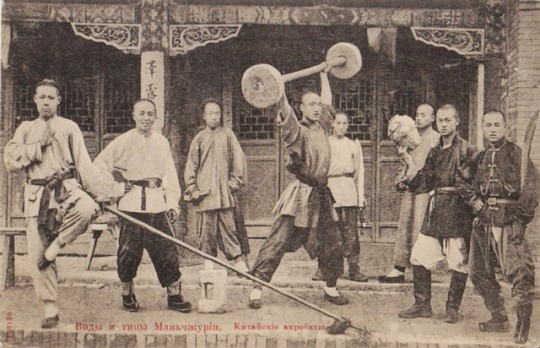
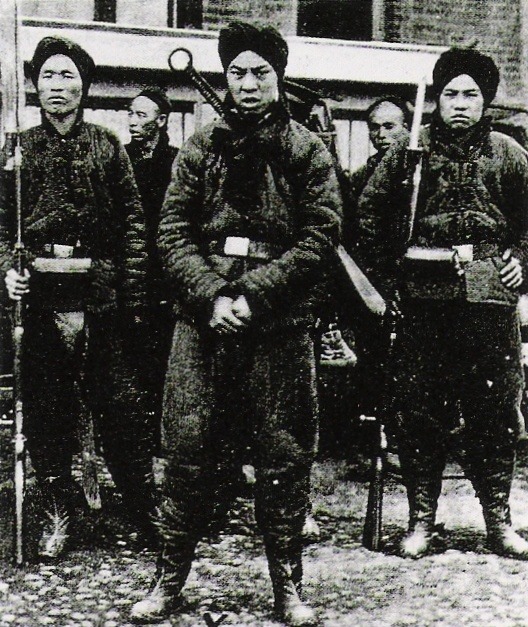

TO TOPPLE A DYNASTY: KUNG FU REBELS AND THE CYCLE OF HISTORY
“The last time China’s government collapsed was just over 100 years ago, when the Qing Dynasty fell after almost four centuries of rule. The fall didn’t happen in a day, ranging instead over a century of unrest and violence that began around 1850 and ended in 1950 when the Communist Party consolidated rule over most of the country.”

“The martial arts played a critical, prominent role in the rebellions and warfare that tore the nation apart and eventually toppled the Emperor. Four rebellions in particular put the role of the martial artist in times of social unrest into perspective, and also help place the current martial arts infrastructure in China into stark contrast with the institutions that existed 100 years ago.”
Those rebellions are the Red Turban or “Opera Rebellion” (1854 - 1855), the Red Spears Uprising (powerful in the 1920s and 30s), The Boxer Rebellion (1899 - 1901) and the most destructive civil war in the history of mankind, the Taiping Rebellion (1850 - 1864).”
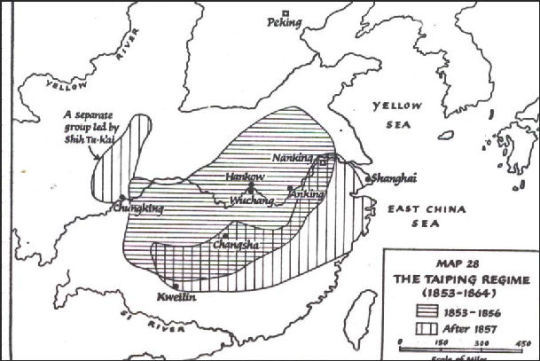
“Officials and martial arts societies in Guangzhou at this time were faced with a choice: join the rebels and chaos or join the Imperials and order. The elites and their martial retainers chose order. After that choice was made, the rebellion was crushed and the elites went on a violent purge of the underclasses, slaying up to a million boatmen, wanderers, broke people, performers, unaffiliated thugs and martial artists. The Opera Rebellion demonstrates the tendency of the Chinese elite to use and exploit the martial element of society when needed, and destroy and pacify it when not.”

”The Opera Rebellion was one of the first steps towards solidifying the relationship between the State and martial artists, one in which kung fu societies would either serve the government or be annihilated. China’s government still uses thugs whenever they need them. The attempted suppression of the Occupy Central movement in Hong Kong through Triads and other gangsters was widely thought to be a Beijing ploy. It certainly fits in with the old tactics that have worked for centuries and the way the whole thing went down in Hong Kong smacks of how the Chinese central government does their thing.”
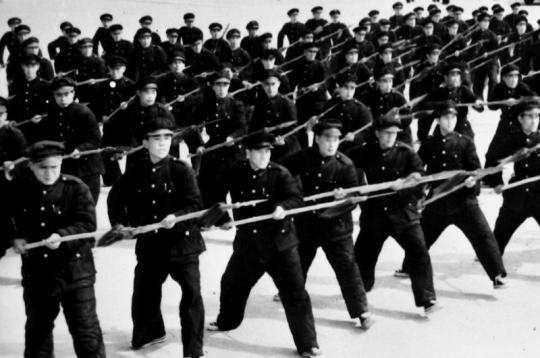
“The Red Spear Society in Henan Province was perhaps the largest pure martial arts uprising of its time, although “uprising” is not entirely accurate. The Red Spears (1916 - 1949) were a response to the complete breakdown of social, economic, and political institutions in north-central China. Famines, warlordism, corruption, banditry along every road...The Red Spears were essentially groups of more or less trained martial artists who worked with local elites and landlords to establish a semblance of order. But what in fact happened was just banditry in a more organized fashion.”

“The Red Spears and their many offshoots and enemies “ruled” Henan until the Northern Expedition of 1928 by the Chinese Nationalists under Chiang Kai-shek re-established some kind of government control over the area. This is the same expedition that resulted in the razing of the Shaolin Temple and the destruction of several rebel bands, but didn’t actually maintain control. The area would be the demesne of martial artists armed with spears, swords, bucklers, muskets and the odd rifle for another 20 years, until the Communists assumed strong central control over China.”

“As with the Opera Rebellion, the authorities didn’t immediately annihilate the martial bands and their leaders. They had a choice. Go home and be obedient citizens, or be destroyed. The authorities eventually co-opted many of the societies affiliated (or opposed to) the Red Spears and established a whole new set of institutions to channel and control the martial element within Chinese society. Sports universities and wushu associations, for example, replaced the clans, fiefs, and martial arts schools that formed the core of the martial infrastructure in the 19th century. Anyone willing to enter this new path for the martial artist was welcome, those who did not were purged.”

“Martial arts in China is a part of society that cannot be burned out, purged into oblivion, or ignored. No matter what happens to kung fu in China, it has always popped back up. It is still commonplace today for business-owners in a dispute to call upon the kung fu guys they know for muscle. Guns are hard to come by in China, so most of the street level fighting is done with fists, bottles, or knives. In a corrupt society ruled by class and social distinctions more than by the rule of law, kung fu has its place. The Communist Party understands this and has done a solid job of channeling kung fu into the movies, sports, and security apparatus. That will work as long as the authorities maintain a monopoly on dispute resolution and violence. When the government does not hold this monopoly, the old violent cycle of rebellion and disunity follows.”

“More than 20 million people died during the Taiping Rebellion, history’s nastiest and most destructive civil war. The war lasted for two decades. To try and give this perspective, about 600,000 people died during the American Civil War, which was raging at the same time.”

“The Taiping Rebellion was born in a perfect storm of widespread economic hardship, official malfeasance and weakness, the rise of regional bandit and kung fu societies, and religious heterodoxy. Geopolitically China was in bad shape, having lost the First Opium War and about to lose the Second. Socially, the entire country was a patchwork of regional governors working within constantly shifting alliances involving a hundred thousand different societies, organizations, gangs, associations and what not ... an unstable quilt of betrayal and greed that operated with impunity beneath the charade of paternal Imperial rule.”

“The spark that lit all of this dry wood into a 20 year conflict was a self-proclaimed prophet, Hong Xiuquan, who foretold the fall of the ethnic Manchus and their Qing Dynasty to an alliance of quasi-Christian ethnic Han rebels who would usher in a new modern era for China. The martial arts societies that grew and flourished all over China as the Qing’s power waned made up a large part of the Taiping armies. The martial element within society formed under a cultish banner to assault the status quo in the hopes of creating a new society. Their new society was based ostensibly on equality and the abolition of old Imperial accoutrements like Confucianism, Buddhism, and the idea of a Dynasty altogether.”

“Hong and his followers failed and were eventually crushed. Their failure came about mostly due to Western powers who lent their aid to the Qing Dynasty at a critical juncture, the Battle of Shanghai, and then helped form a modern army that could take on and defeat the Taiping forces. After the Taiping capital at Nanjing was taken, the Imperials spent another 10 years hunting down the rest of the Taiping forces before the threat was permanently extinguished.”
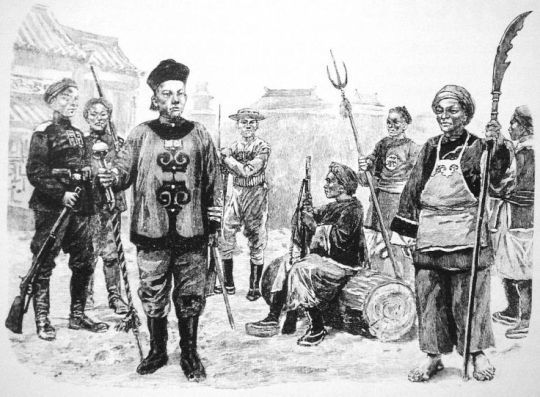
“The Communists have drawn many lessons from the Taiping Rebellion: Crush any heterodox religious movement before it can grow. Keep the “prophets” separated from the commoners who make up the core of every rebel army that ever existed. Co-opt and control the martial arts and never allow the three (commoners, prophets, martial artists) to combine into a powerful anti-government force.”
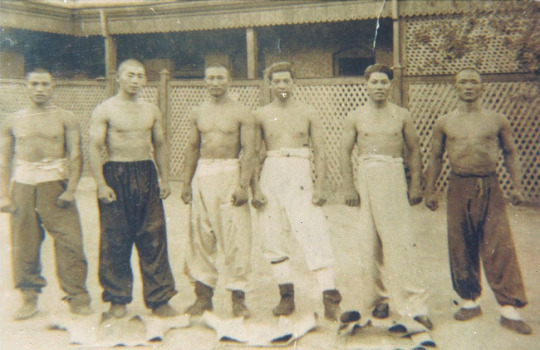
“The Taiping Rebellion was, among many other things, such a combination, but where the Taiping rebels failed, the Communists succeeded. A combination of commoners, martial elements, and the cultish power of Marx embodied in Mao eventually did erase the dynasty and establish a new society, also based on ideals any commoner could get behind. The Communist Party has since rehabilitated the Taiping Rebellion, and placed those rebels within the context of a century long struggle to throw off the Imperial yoke and gain freedom for the proletariat.”

“The Boxers were a band of “Righteous and Harmonious Fists” who called for the expulsion of foreigners and the restoration of the Imperial order. For two years they split the Qing government in two, with the pro-Boxer faction including the Empress Dowager Cixi calling for all out war against the foreign powers on one side, and conciliatory diplomats on the other. In chaotic battles involving irregulars armed with swords as well as Imperial soldiers armed with the most modern cannons at the time, the Boxers and their allies defeated foreign armies and besieged foreign legations within Beijing. The uprising also led to widespread killings across China, mainly targeting Christians and missionaries.
The Qing were betrayed by regional warlords who refused the call to war against the foreigners, and after protracted battles in Beijing and Tianjin, the rebellion was put down by the Eight Nation Alliance (Western powers)...ordered the Qing to pay reparations (around $61 billion in modern terms) and execute many top officials.”

“And for much of Chinese history, that’s what martial artists tended to be. Performers and bodyguards, dispute-settlers and paragons of idealistic virtue. It’s only when the government stumbles, leaving a vacuum, that kung fu people become the type of force that step in and help keep order, or help topple a dynasty. In that sense, it doesn’t matter if the kung fu people of today are rebellious or obedient, it matters more that the government maintains a monopoly on force and justice. Once that monopoly is challenged, the old cycle of history tells us that violence is right around the corner.”

(via To Topple a Dynasty: Kung Fu Rebels and the Cycle of History | FIGHTLAND)


Chinese names in traditional Chinese family culture
“Within each family system, besides the common family name, descendants often specify another common character in their given names for each generation. This common character in given name is called the "Spreading Character", which is an indication of the person's generation within the family system.The Spreading Character can be either the first character or the second character of the given name.”

Generational (spreading) names that are shared among brothers and cousins may be based on (or a variant of) the mother’s or grandparent’s family name, usually if the clan has higher status than the father’s family name.
Generational name
“Generation name, variously zibei or banci, is one of the characters in a traditional Chinese given name, and is so called because each member of a generation (i.e. siblings and paternal cousins of the same generation) share that character. Where used, generation names were usually given only to males.
Generation names may be the first or second character in a given name. Normally this position is consistent for the associated lineage. However some lineages alternate its position from generation to generation. This is quite common for Korean names. Sometimes lineages will also share the same radical in the non-generation name.”

Korean name
"During the Three Kingdoms period, native given names were sometimes composed of three syllables like Misaheun (미사흔) and Sadaham (사다함), which were later transcribed into hanja (未斯欣, 斯多含). The use of family names was limited to kings in the beginning, but gradually spread to aristocrats and eventually to most of the population.[25]
According to the chronicle Samguk Sagi, family names were bestowed by kings upon their supporters...For men of the aristocratic yangban class, a complex system of alternate names emerged by the Joseon period. On the other hand, commoners typically only had a first name.[17] Surnames were originally a privilege reserved for the yangban class, but members of the middle and common classes of Joseon society frequently paid to acquire a surname from a yangban and be included into a clan.”

“The initial sound in "Kim" shares features with both the English 'k' (in initial position, an aspirated voiceless velar stop) and "hard g" (an unaspirated voiced velar stop). When pronounced initially, Kim starts with an unaspirated voiceless velar stop sound; it is voiceless like /k/, but also unaspirated like /ɡ/. As aspiration is a distinctive feature in Korean but voicing is not, "Gim" is more likely to be understood correctly. "Kim" is used nearly universally in both North and South Korea.[40]
In English publications, usually Korean names are written in the original order, with the family name first and the given name last. This is the case in Western newspapers. Koreans living and working in Western countries have their names in the Western order, with the given name first and the family name last. The usual presentation of Korean names in English is similar to those of Chinese names and differs from those of Japanese names, where they, in English publications, are usually written in a reversed order with the family name last.”[43]
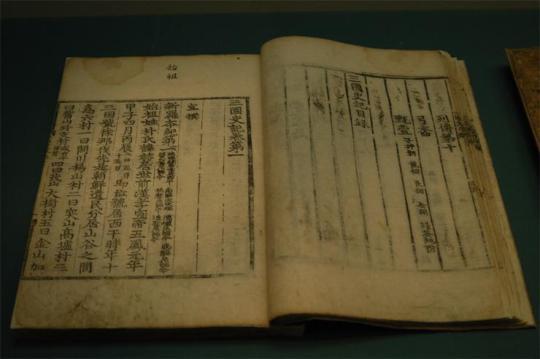
Samguk sagi
“Samguk sagi (삼국사기, 三國史記, History of the Three Kingdoms) is a historical record of the Three Kingdoms of Korea: Goguryeo, Baekje and Silla... the Records of the Grand Historian, this work was released circa 100 BCE under the more modest title of Shǐjì 史記, i.e. Scribe's Records. By allusion, Kim Busik called his own work 三國史記, i.e. Samguk sagi, where Sagi (nowadays 사기) was the Korean reading of the Chinese Shǐjì.[1]
"Native heritage" is primarily interpreted by the Samguk sagi to mean "Three Kingdoms heritage" brings us to the work’s ostensibly broader purpose, and that was to promote Three Kingdoms...as the orthodox ruling kingdoms of Korea, and to thus solidify the legitimacy and prestige of the Goryeo state, as the Three Kingdoms’ rightful successor. In this way it helped to confer the idea of zhengtong 正統, or "orthodox line of succession", upon the new dynasty. It was with just such intent that Goryeo's King Injong tapped Kim Busik to compile the history of the Three Kingdoms. Goryeo’s quest, through the writing of the Samguk sagi, to secure its legitimacy and establish its continuation of the "mantle of authority" (or Mandate of Heaven) from the Three Kingdoms.”

Manchu name
“Like the Mongols, the Manchus were simply called by given name but they had their own clan names (hala in Manchu)...The Comprehensive Book of the Eight Manchurian Banners' Surname-Clans (八旗滿洲氏族通譜 Baqi Manzhou Zhizu Tongpu), compiled in the middle 18th century, records many Manchu clan names. Among more than a thousand names, about 600 names are the Manchus'.
Gioro, a major clan name, is the one of the few hala that has various variants such as Irgen, Silin and Šušu, possibly to distinguish from the imperial family name Aisin-Gioro. Since the mid-to-late Qing Dynasty, Manchus have increasingly adopted Han Chinese surnames, and today, very few Manchus bear traditional Manchu family names.”

Naming taboo
“A naming taboo is a cultural taboo against speaking or writing the given names of exalted persons in China and neighboring nations in the ancient East Asian cultural sphere.
The naming taboo of the state (国讳; 國諱) discouraged the use of the emperor's given name and those of his ancestors...The strength of this taboo was reinforced by law; transgressors could expect serious punishment for writing an emperor's name without modifications. In 1777, Wang Xihou in his dictionary criticized the Kangxi dictionary and wrote the Qianlong Emperor's name without leaving out any stroke as required. This disrespect resulted in his and his family's executions and confiscation of their property.”[1]

Eight Banners
“The Eight Banners were administrative/military divisions under the Qing dynasty into which all Manchu households were placed. In war, the Eight Banners functioned as armies, but the banner system was also the basic organizational framework of all of Manchu society.
Although the banners were instrumental in the Qing Empire takeover of China proper in the 17th century from the Ming dynasty, they began to fall behind rising Western powers in the 18th century. By the 1730s, the traditional martial spirit had been discarded, as the well-paid Bannerman spent their time gambling and theater going. Subsidizing the 1.5 million men, women and children in the system was an expensive proposition, compounded by embezzlement and corruption.
In the 19th century, the Eight Banners and Green Standard troops proved unable to put down the Taiping Rebellion and Nian Rebellion on their own. Regional officials like Zeng Guofan were instructed to raise their own forces from the civilian population, leading to the creation of the Xiang Army and the Huai Army, among others. Along with the Ever Victorious Army of Frederick Townsend Ward, it was these warlord armies (known as yongying) who finally succeeded in restoring Qing control in this turbulent period.”

“During the Boxer Rebellion, 1899–1901, 10,000 Bannermen were recruited from the Metropolitan Banners and given modernized training and weapons...Many Manchu Bannermen in Beijing supported the Boxers and shared their anti-foreign sentiment.[50] The Manchu Bannermen were devastated by the fighting during the Boxer Rebellion, sustaining enormous casualties during the war and subsequently being driven into desperate poverty.[51]
By the late 19th century, the Qing Dynasty began training and creating New Army units based on Western training, equipment and organization. Nevertheless, the banner system remained in existence until the fall of the Qing in 1911, and even beyond, with a rump organization continuing to function until the expulsion of Puyi (the former Xuantong emperor) from the Forbidden City in 1924. At the end of the Qing dynasty, all members of the Eight Banners, regardless of their original ethnicity, were considered by the Republic of China to be Manchu.”

Chinese Interpreters in San Francisco
“The Court Interpreter, Moy A. Non, has officiated in numerous cases, but none of his countrymen have sought to molest him. It is a very pretty riddle to solve, and is, to say the least of it, rather suggestive. The Court Interpreter is armed with unlimited power for evil, and it certainly behooves the authorities to leave no stone unturned to replace him with a white man.”

“In several cases where a Caucasian interpreter has been called in, his translations have been contradicted, his knowledge of the Chinese tongue ridiculed, and the Court thereby embarrassed. The Court is powerless to detect fraud in the books of Chinese firms, and is compelled to rely solely upon the translations of a Chinaman whose life would not be worth a nickel were he a stumbling block in the path of the Chinese firms. Those books are produced as evidence that the applicant for debarkation resided here formerly, and it rests altogether with the interpreter whether he gives the Court a true or a false reply. It is humiliating to the last degree to behold the administration of the law placed at the mercy of one whose every instinct despises it, and whose very existence depends upon his perjuring himself to thwart it.”
January 13, 1884, Daily Alta California, San Francisco, California, U.S.A.

What Did Chinatown Leaders Do to Avert Anti-Chinese Violence? Did They Succeed?
“In 19th century New York, the presence of well-connected Chinese figures like Honorary Deputy Sheriff Tom Lee and the pioneering civil rights advocate Wong Chin Foo gave the Chinese community there a very different public image from that of Chinese in Sacramento or San Francisco.
Chinese leaders in the big California cities had different backgrounds than Chinese leaders elsewhere in North America. While in Chicago and New York, community leadership came from merchants and other businessmen, in California it was in the hands of diplomats and high-status scholars brought specially from China to head the various regional associations. Such leaders, legitimized by Chinese law and traditional attitudes, must often have worked effectively among their countrymen. They also could use their high-level connections in China to mobilize the imperial government on the behalf of Chinese in and outside California.”

“In 1886, Chin Gee Hee's close business connections with such figures as Judge Thomas Burke, along with his influence at the Chinese ministry in Washington, was a key factor in persuading the white establishment to intervene against attempts to drive out Chinese residents.”

The First Exhibition of Kung Fu and Chinese Martial Arts in America: Brooklyn, 1890
“On February 23, 1890, the following announcement appeared in the Brooklyn Daily Eagle:
At Robertson’s Gymnasium, corner of Fulton and Orange streets, on Tuesday evening, Ah Giang and [Foo Jung], champion bantam and featherweight fighters of China, will give an exhibition of the manly art of self defense as conducted in their native country.
Although, previously, a few reports of the existence of Kung Fu and styles of Chinese pugilism had appeared in American newspapers, the exhibition at Robertson’s gymnasium appears to be the first demonstration that was open to the public, and was certainly the first such event that attracted any degree of attention in the American print media.”
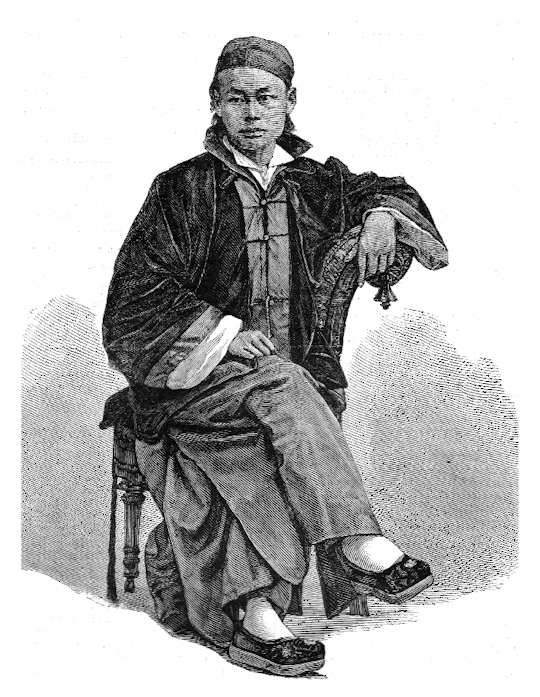
“It is worth noting that the speaker, Wong Chin Foo (1847-1898), was a noted activist for Chinese American civil rights. He was also a former revolutionary, having attempted to overthrow the corrupt Qing government. He fled to the U.S. in 1873, where he established the Chinese Equal Right League, founded a Chinese-language newspaper, crusaded against vice in New York City’s Chinatown, and survived several assassination attempts by gangsters. At one point, he challenged the San Francisco anti-Chinese journalist Denis Kearney to a duel. Wong also bought a Chinese theater, established a language school and opened a Confucian temple.”

Chinese temple architecture
“Chinese temple architecture refer to a type of structures used as place of worship of Chinese Buddhism, Taoism or Chinese folk religion/Shenism, where people revere ethnic Chinese gods and ancestors.
Gōng (宫), meaning "palace" is a term used for a templar complex of multiple buildings, while yuàn (院) is a generic term meaning "sanctuary" or "shrine".

See Lung Hing Kee & Co. Chinese Joss House 131 1st Avenue, Portland, OR
“An old name in English for Chinese traditional temples is "joss house".[1] "Joss" is an Anglicized spelling of the Portuguese word for "god", deus. "Joss house" was in common use in English in western North America during frontier times, when joss houses were a common feature of Chinatowns. The name "joss house" describes the environment of worship. Joss sticks, a kind of incense, are burned inside and outside of the house.”




A Husband-Wife Team from San Francisco
“The Harvard anthropologist Frederick Ward Putnam, who was a top Fair official and should have known what he was talking about, described them as
“the most prominent Chinese at the fair.” He wrote that Ah Que had been educated by Presbyterian missionaries in San Francisco and that “she is said to be very popular” in that city. As for Wong Ki, Putnam credits him with being “the architect of the Chinese Building and the decorator and designer of the Joss House.”

“Putnam goes on to say that Wong Ki was “a native of Canton, where he spent his youth in studying the peculiar architecture of his country. Arriving at manhood, he concluded to cast his lot with many of his countrymen in California, and there was successful at his trade and also fortunate in meeting the beautiful Ah Que, who is now his devoted wife.”The problem is that Putnam’s captions contradict other sources. Wong Ki certainly was not the most prominent male Chinese at the Fair. Hong Sling and Gee Wo Chan received more publicity, and leading members of the Moy family were more influential. True, one Wong Kee, said to be the richest man in (the Clark Street) Chinatown, was a financial backer of the Chinese Theater and Joss House.”

Wong Kai Kee, Artist and Printer, and His Progressive Wife
The Los Angeles Herald (California) March 15, 1896 As Chinamen See Us
“Kai Kee, the distinguished Chinese artist, has made some pictures of New York life for the readers of the Sunday Journal. Kai Kee has established a little studio at No. 1 Doyers street, where he has decided to settle after his fame and reputation at the Chicago world’s fair. He was sent to the exposition from his native land to superintend the construction of the Chinese government buildings at the fair.”

“He was more than pleased when requested to make some pictures for the Journal. Mr. Kai Kee begins his pictorial impressions of New York life with a sketch of the crowd at the entrance to the Brooklyn bridge. Then he was taken to the menagerie in Central park and given an hour’s opportunity to study the monkey pavilion.”




Keye Luke
“Luk Shek Kee (June 18, 1904 – January 12, 1991) was a Chinese-American film and television actor, technical advisor and artist, he was a founding member of the Screen Actors Guild[1][2] He was known for playing Lee Chan, the "Number One Son" in the Charlie Chan films, the original Kato in the 1939–1941 Green Hornet film serials, Brak in the 1960s Space Ghost cartoons, Master Po in the television series Kung Fu, and Mr. Wing in the Gremlins films. He was the first Chinese-American contract player signed by RKO, Universal Pictures and Metro-Goldwyn-Mayer and was one of the most prominent Asian actors of American cinema in the mid-twentieth century.”[3]


Shaolin Monastary
“There is evidence of Shaolin martial arts being exported to Japan since the 18th century. Martial arts such as Okinawan Shōrin-ryū (小林流) style of Karate, for example, has a name meaning "Shaolin School"[26] and the Japanese Shorinji Kempo (少林寺拳法) is translated as "Shaolin Temple Fist Method". Other similarities can be seen in centuries-old Chinese and Japanese martial arts manuals.”[27]


Hapkido
“Hapkido is rendered "합기도" in the native Korean writing system known as hangul, the script used most widely in modern Korea. The art's name can also however be written "合氣道" utilizing the same traditional Chinese characters which would have been used to refer to the Japanese martial art of aikido in the pre-1946 period. The current preference in Japan is for the use of a modern simplified second character; substituting 気 for the earlier, more complex character 氣. The character 合 hap means "coordinated", "joining", or "harmony"; 氣 ki describes internal energy, spirit, strength, or power; and 道 do means "way" or "art", yielding a literal translation of "joining-energy-way". It is most often translated as "the way of coordinating energy", "the way of coordinated power", or "the way of harmony.
Although Japanese Aikido and Korean Hapkido share common technical origins, in time they have become separate and distinct from one another. They differ significantly in philosophy, range of responses, and manner of executing techniques. The fact that they share the same Japanese technical ancestry represented by their respective founders practice of Daitō-ryū Aiki-jūjutsu, and that they share the same Chinese characters, despite 合 being pronounced "ai" in Japanese and "hap" in Korean, has proved problematic in promoting Hapkido internationally as a discipline with its own set of unique characteristics differing from those common to Japanese martial arts.”

Kido Kwon Association

Aikido
“In Japanese Aiki is formed from two kanji:合 - ai - joining氣 - ki - spirit
The kanji for "ai" is made of three radicals, "join", "one" and "mouth". Hence, "ai" symbolizes things coming together, merging. Aiki should not be confused with "wa" which refers to harmony. The kanji for "ki" represents a pot filled with steaming rice and a lid on it. Hence, "ki" symbolizes energy (in the body).
Thus aiki's meaning is to fit, join, or combine energy. However, care must be taken about the absolute meanings of words when discussing concepts derived from other cultures and expressed in different languages. This is particularly true when the words we use today have been derived from symbols, in this case, Japanese kanji, which represent ideas rather than literal translations of the components.”

“Historical use of a term can influence meanings and be passed down by those wishing to illustrate ideas with the best word or phrase available to them. In this way, there may be a divergence of the meaning between arts or schools within the same art. The characters "ai" and "ki" have translations to many different English words.Historically, the principle of aiki would be primarily transmitted orally, as such teachings were often a closely guarded secret. In modern times, the description of the concept varies from the physical [1] to vague and open-ended, or more concerned with spiritual aspects.
Aiki lends its name to various Japanese martial arts most notably aikido and its parent art, Daito-ryu aiki-jujutsu. These arts tend to use the principle of aiki as a core element underpinning the bulk of their techniques. Aiki is an important principle in several other arts such as Kito-ryu and various forms of kenjutsu.[2]
”
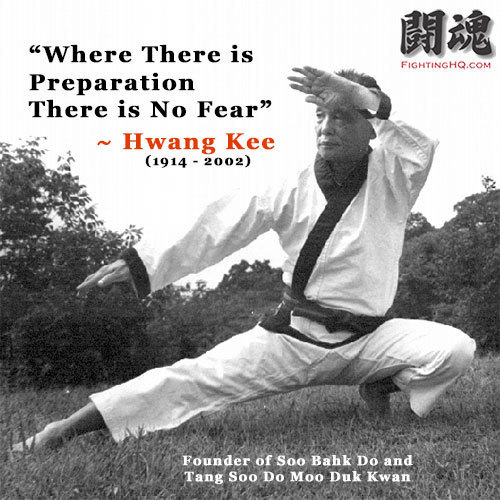
Tang Soo Do
“"Tang Soo Do" (당수도) is the Korean pronunciation of the Hanja 唐手道 (pronounced Táng shǒu dào in Chinese),[2] and translates literally to "The Way of the Tang Hand."The same characters can be pronounced "karate-dō" in Japanese.
Outside of the Far East, the term "Tang Soo Do" has primarily become synonymous with the Korean martial art promoted by grandmaster Hwang Kee.
The history of the Moo Duk Kwan (from which the majority of all modern Tang Soo Do stylists can trace their lineage) can be traced to a single founder: Hwang Kee,[6] who learned Chinese martial arts while in Manchuria.”

”Between 1944 and the Liberation of Korea in 1945, the original schools or kwans of Tang Soo Do were founded in Korea by practitioners who had studied karate and had some exposure to kung-fu. Together, these original five schools and their teachers became the foundation of Tang Soo Do.
In 1964, the Korean Tae Soo Do Association was formed which, in 1965, became the Korean Tae Kwon Do Association...Actor Chuck Norris popularized Tang Soo Do in the Western world, and from it evolved the martial art Chun Kuk Do.”

Famous Veterans: Chuck Norris
“Norris joined the Air Force after high school, with the goal of training in the Security Police in preparation for a career in law enforcement. It was in the Air Force, while stationed in Korea, that Chuck was introduced to martial arts. One night on duty, Norris realized that he couldn't arrest a rowdy drunk without pulling his weapon.
He thus studied Tang Soo Do and Tae Kwan Do, both Korean martial arts, and became the first Westerner to be awarded an eighth-degree Black Belt in Tae Kwan Do. When he returned to the US, Norris served at March Air Force Base, California before being discharged in August 1962. He then worked for Northrop Aviation, but moonlighted as a karate instructor and soon was teaching full-time and running a number of martial arts schools, teaching famous celebrities such as the Osmonds, Priscilla Presley and Steve McQueen. He held the world middleweight karate champion title for six years, and was named Black Beltmagazine's "Fighter of the Year" in 1969, eventually founding 32 martial arts schools.”
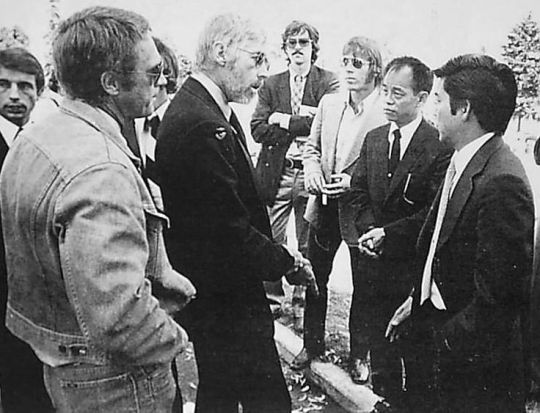
“It was McQueen who encouraged Norris to go into acting. After bit roles, he captured the public's attention with his show-stopping turn as Bruce Lee's martial arts opponent in "Return of the Dragon" (1973). By the late 70s he was popular enough to headline his own movies, and starred in cult classics such as "Good Guys Wear Black," "Delta Force" and "Missing in Action." He currently stars in the popular TV series "Walker, Texas Ranger." Norris' fame grew to the point that fans began making up "Chuck Norris facts" about him (i.e., "Chuck Norris once kicked a horse in the chin. Its descendants today are known as giraffes"), and to this day new "Chuck Norris facts" are still being created, much to the good-natured Norris' amusement.”
(via Famous Veterans: Chuck Norris | Military.com)
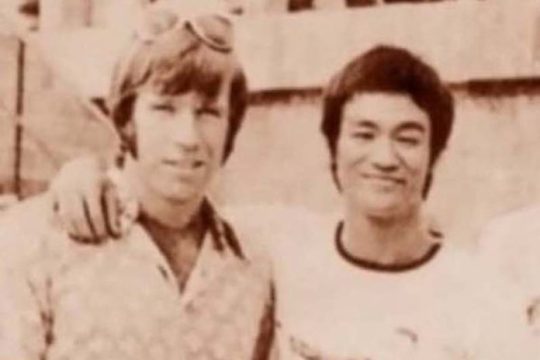
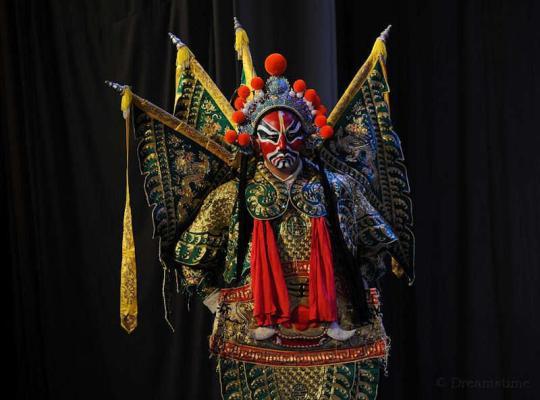
Chinese Opera
“The name 国粹 guó cuì meaning Quintessence of the nation.
Chinese Opera is an art-form that includes many elements: music; dance; acting; mime; comedy; tragedy; acrobatics and martial arts. An aspiring opera performer has to learn to 唱念做打 chàng niàn zuò dǎ sing, talk, act and fight. Over the centuries the art form has become more refined, as in much of Chinese art, the aim is to emulate former masterpieces rather than innovate.
Operas are divided between Wenxi (civilian plays) and Wuxi (military dramas) and between dramas; comedies and farces. The story-lines come from folk tales, legends and classical literature - anything too contemporary was considered politically dangerous. It was forbidden to portray emperors or empresses of the current dynasty.”
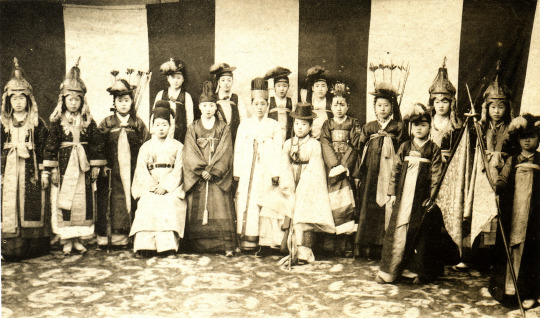

Kisaeng
“Kisaeng (Hangul: 기생; Hanja: 妓生; RR: gisaeng), sometimes called ginyeo (Hangul: 기녀; Hanja: 妓女), were enslaved women who worked to entertain others, such as yangbans and kings, during the Goryeo and Joseon dynasties. They were also courtesans, providing sexual services.[1][2] First appearing in Goryeo, kisaeng were the government's legal entertainers, required to perform various functions for the state. Many were employed at court, but they were also spread throughout the country. They were carefully trained and frequently accomplished in the fine arts, poetry, and prose, although their talents were often ignored due to their inferior social status. Aside from entertainment, these roles included medical care and needlework. Kisaengs play an important role in Korean conceptions of the traditional culture of the Joseon. Some of Korea's oldest and most popular stories, such as Chunhyangjeon, feature kisaeng as heroines.”

”As kisaeng were skilled workers from the beginning, the government took an early interest in ensuring correct education. This first emerged with the establishment of gyobang, training institutes for palace kisaeng during the Goryeo period. During the Joseon period, this became further codified. Instruction focused on music and dance.
In the three-tiered system of later Joseon, more specialized training schools were established for kisaeng of the first tier. The course of study lasted three years and covered poetry, dance, music, and art.[20] The most advanced such school was located in Pyongyang. This system continued well into the Japanese colonial period, during which time the schools training kisaeng were known as gwonbeon (Hangul: 권번).”
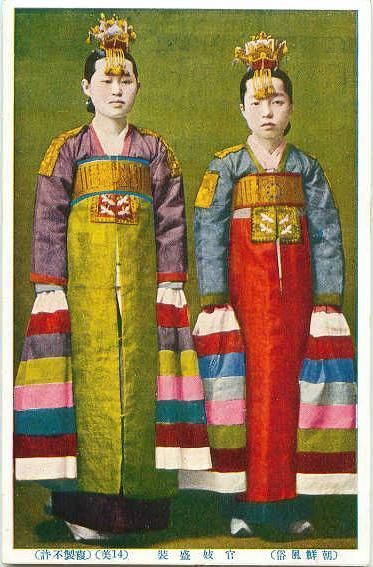
“Most kisaeng had a gibu, or "kisaeng husband", who provided protection and economic support, such as buying them valuable things or granting them social status in return for entertainment.[27] Most gibu were former soldiers, government enforcers, or servants of the royal household.[28] At times, there was friction between would-be customers and possessive gibu, although the gibu was not the kisaeng's husband and had no legal claim to her.[29] The role of the gibu changed over time; at first, many kisaeng in government service had no such patron.[30] However, by the late Joseon dynasty, the gibu system was more or less universal.”[31]
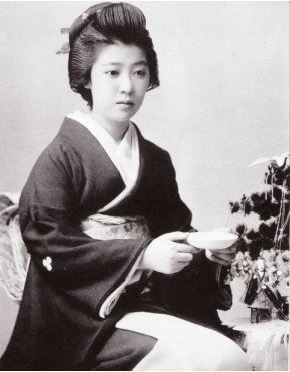
Geisha
“Geisha (芸者) geiko (芸子), or geigi (芸妓) are Japanese women who entertain through performing the ancient traditions of art, dance and singing, and are distinctively characterized by traditional costumes and makeup.Contrary to popular belief, Geisha are not the Eastern equivalent of a prostitute; a misconception originating in the West due to interactions with Oiran Japanese courtesans, whose traditional attire is similar to that of geisha.
The word geisha consists of two kanji, 芸 (Gei) meaning "art" and 者 (Sha) meaning "person" or "doer". The most literal translation of geisha into English would be "artist", "performing artist", or "artisan". Another name for geisha is Geiko (芸妓), which translates specifically as "Woman of Art".
In the early stages of Japanese history, there were female entertainers: Saburuko (serving girls) were mostly wandering girls whose families were displaced from struggles in the late 600s. Some of these saburuko girls sold sexual services, while others with a better education made a living by entertaining at high-class social gatherings. After the imperial court moved the capital to Heian-kyō (Kyoto) in 794 the conditions that would form geisha culture began to emerge, as it became the home of a beauty-obsessed elite.”[6]

“Traditional Japan embraced sexual delights (it is not a Shinto taboo) and men were not constrained to be faithful to their wives.[7] The ideal wife was a modest mother and manager of the home; by Confucian custom love had secondary importance. For sexual enjoyment and romantic attachment, men did not go to their wives, but to courtesans. Walled-in pleasure quarters known as yūkaku (遊廓、遊郭) were built in the 16th century,[8] and in 1617 the shogunate designated "pleasure quarters", outside of which prostitution would be illegal,[9] and within which yūjo ("play women") would be classified and licensed. The highest yūjo class was the geisha's predecessor, called tayuu, a combination of actress and prostitute, originally playing on stages set in the dry Kamo riverbed in Kyoto. They performed erotic dances and skits, and this new art was dubbed kabuku, meaning "to be wild and outrageous". The dances were called "kabuki", and this was the beginning of kabuki theater.”[9]

“These pleasure quarters quickly became glamorous entertainment centers, offering more than sex. The highly accomplished courtesans of these districts entertained their clients by dancing, singing, and playing music. Some were renowned poets and calligraphers. Gradually, they all became specialized and the new profession, purely of entertainment, arose. It was near the turn of the eighteenth century that the first entertainers of the pleasure quarters, called geisha, appeared. The first geishas were men, entertaining customers waiting to see the most popular and gifted courtesans (oiran).[9]
The first woman known to have called herself geisha was a Fukagawa prostitute, in about 1750.[13] She was a skilled singer and shamisen player named Kikuya who was an immediate success, making female geisha extremely popular in 1750s Fukagawa.[14] As they became more widespread throughout the 1760s and 1770s, many began working only as entertainers (rather than prostitutes), often in the same establishments as male geisha.”[15]

“By 1800, being a geisha was considered a female occupation (though there are still a handful of male geisha working today). Eventually, the gaudy Oiran began to fall out of fashion, becoming less popular than the chic ("iki") and modern geisha.[9] By the 1830s, the evolving geisha style was emulated by fashionable women throughout society.[16] There were many different classifications and ranks of geisha. Some women would have sex with their male customers, whereas others would entertain strictly with their art forms.[17]Prostitution in Japan was legal up until 1908, so it was practised throughout Japan.”

“In 1944, the geisha world, including the teahouses, bars and geisha houses, was forced to close, and all employees were put to work in factories. About a year later, they were allowed to reopen. The geisha name also lost some status during this time because prostitutes began referring to themselves as "geisha girls" to American military men.”[18]

”During the period of the Allied occupation of Japan, local women called "Geisha girls" worked as prostitutes. They almost exclusively serviced American GIs stationed in the country, who actually referred to them as "Geesha girls" (a mispronunciation).[73][74] These women dressed in kimono and imitated the look of geisha. Many Americans unfamiliar with the Japanese culture could not tell the difference between legitimate geisha and these costumed performers.[73] Shortly after their arrival in 1945, some occupying American GIs are said to have congregated in Ginza and shouted, "We want geesha girls!"[75]

Kabuki
“Kabuki (歌舞伎) is a classical Japanese dance-drama. Kabuki theatre is known for the stylization of its drama and for the elaborate make-upworn by some of its performers.The individual kanji, from left to right, mean sing (歌), dance (舞), and skill (伎). Kabuki is therefore sometimes translated as "the art of singing and dancing". These are, however, ateji characters which do not reflect actual etymology. The kanji of 'skill' generally refers to a performer in kabuki theatre. Since the word kabuki is believed to derive from the verb kabuku, meaning "to lean" or "to be out of the ordinary", kabuki can be interpreted as "avant-garde" or "bizarre" theatre.[1] The expression kabukimono (歌舞伎者) referred originally to those who were bizarrely dressed. It is often translated into English as "strange things" or "the crazy ones", and referred to the style of dress worn by gangs of samurai.”
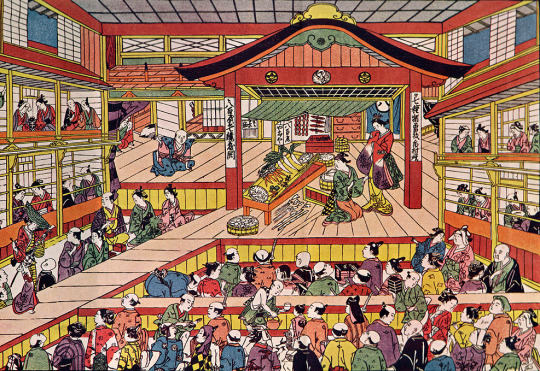

“Wah Kee (华记) is a secret society based in Malaysia and Singapore since the nineteenth century.”

“A Triad is one of many branches of Chinese transnational organized crime syndicates based in China, Hong Kong, Macau and Taiwan and in countries with significant Chinese populations, such as the United States...
The Hong Kong triad is distinct from mainland Chinese criminal organizations.[2] In ancient China, the triad was one of three major secret societies.[3] It established branches in Macau, Hong Kong, Taiwan and Chinese communities overseas.[4] After the establishment of the People's Republic of China, all secret societies were destroyed in mainland China in a series of campaigns organized by Mao Zedong.”
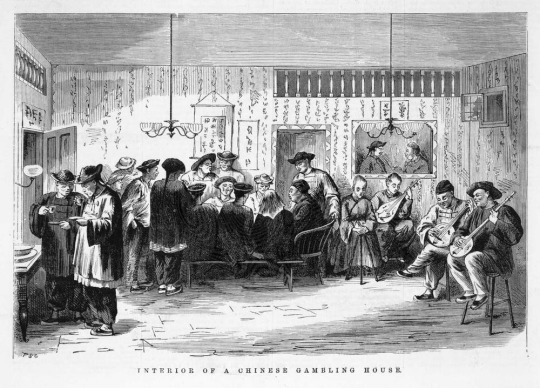
OPIUM IN THE PACIFIC NORTHWEST - 1850′s-1930′s
“Opium use among Chinese immigrants was very widespread, economically important, and -- until 1908-9 -- perfectly legal in most parts of the United States and Canada. The smugglers of opium, most of whom were European-Americans, were criminals, though tolerated and even respected in the Pacific Northwest. Smokers of opium, the majority of whom in those days were Chinese, may have been addicts but were neither criminals nor outcasts.”

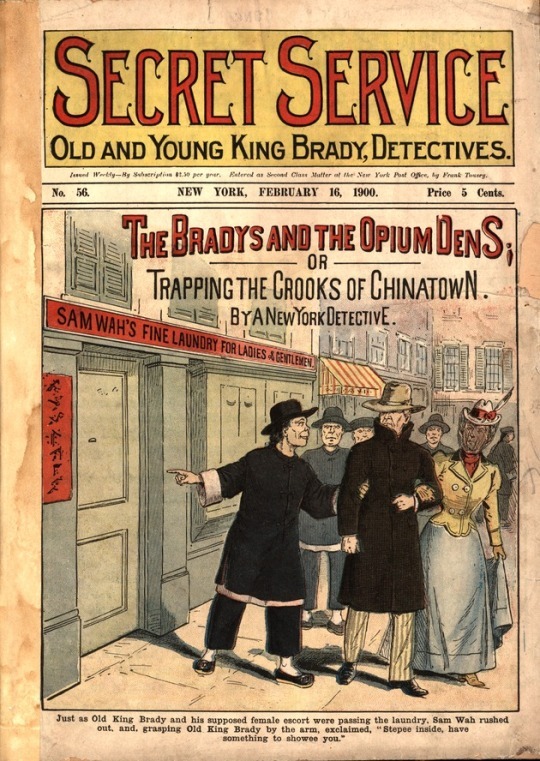
Refining and Packaging Opium for Sale
“Even more prestigious were Indian opiums refined in Hong Kong, where the water and master refiners were thought to be the best in the world. This refining process does concern us, because the end result, opium "boiled" or "cooked" and packaged by a small number of Hong Kong firms, had a central influence on the economies and lifestyles of many North American Chinese in the late 19th and early 20th centuries.”

Victoria: The Largest Opium Making Center Outside Asia
“Opium refining was not confined to eastern Asia. Among the places where it was done on a large scale (but reputedly with less concern for quality) were Victoria, Vancouver, and New Westminster in British Columbia, ideally located for wholesaling (or smuggling) their products to the United States.
Opium refining seems to have gotten its real start in Canada after 1880, when a new U.S. law restricted opium refining to American citizens (Culin 1891: 499). This caused would-be Chinese refiners, none of whom by law could become U.S. citizens, to move across the border to Victoria, which then held the largest Chinese community in Canada.”

Opium Brand Names
“None except Sing Wo Chan, a branch of Macao’s immensely wealthy Sing Wo Co., seem to have specialized in opium alone. The rest had multiple lines of business. Besides opium, they were also importers and sellers of textiles, teas, groceries, and other Chinese goods, and some were labor contractors as well...None are known to have stayed in the opium business after 1908.
The names and stamped seals of Hong Kong opium producers were among the first internationally recognized brand names in the history of Asia. From the 1870s onward they were recognized in North America as well...the most favored brands of opium, Fook Lung and Lai Yuen, along with the less popular Ping Kee brand, were produced by the Yen Wo 仁和 syndicate of merchants from Dongguan, a Cantonese-speaking district southeast of Canton.”

Opium cans or "tins"
“The size of opium cans was standardized. Each held exactly 5 Chinese ounces (= liang or taels) of refined opium, about 6 1/2 ounces avoirdupois but usually calculated as a half-pound by American newspapers and the Customs Service. In the United States in 1891, the wholesale price ranged from $6.80 (for Victoria opium) to $9.00 (for the best Hong Kong opium.”

**Counterfeiting Hong Kong Opium **
“In 1882, a fascinating legal case got under way in San Francisco. The defendant was the U. S. government, which had seized 3,880 5-tael cans of opium, all bearing either “Lai Yuen” or “Fook Loong” labels, from a local man named Kennedy. He claimed that he had been shipping the opium, perfectly legally, to Hawaii, when it was seized. Maintaining that he had not broken any law, he wanted his opium--$25,000 worth--back.
Kennedy had ordered the opium, 4000 taels (2000 pounds) in all, from Choy Suey and Choy Lum, owners of Tai Hung & Co. at 1014 Dupont [Grant] Street in San Francisco. They in turn had purchased the opium, already refined, from firms named Hop Kee and Tuck Kee & Co., also in San Francisco. Until 1880, it was testified,Hop Kee had operated a “manufactory” of prepared (refined) opium in Newark, New Jersey. At Kennedy’s instructions, the Choys repackaged the Hop Kee/Tuck Kee opium to look like the Lai Yuen and Fook Long brands.
For the moment, it is enough to say that almost all of the activities described above were legal, in American if not Hawaiian law, that the witnesses, Chinese and European, testified freely, and that the only person involved who was in legal trouble was Kennedy. And even he was in no danger of prison: the issue at hand was simply whether Customs officials could keep the opium or whether they would have to give it back.”
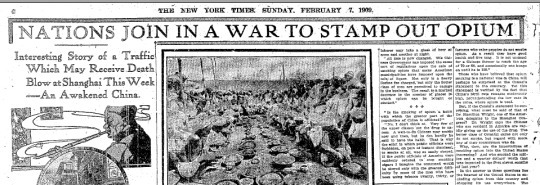
Turning Point: the 1909 Shanghai Conference
“The international conference held in Shanghai in February 1909 was heralded as (and may have really been) the single most important event in the history of effforts to ban the international trade in opium. Held in Shanghai to acknowledge China's spectacularly successful, if short-lived, efforts to suppress narcotics use, especially the smoking of opium, the conference brought all of the major national players to the same table and, in the glare of unprecedented international publicity, forced them to commit to eliminating the opium trade and opium use.
One more or less direct effect was to convince the United States Congress that the time had come to enact a serious anti-opium law. The one passed that year became the foundation of all subsequent anti-narcotics efforts in this country and helped to convince other countries that similar laws were imperative.”

Curing Addicts and Outlawing the Opium Trade: The Missionary Connection
“In the English-speaking world, much of the pressure to ban opium and to cure addicts, sometimes through incarceration or worse, came from missionaries working in China and among overseas Chinese. The most radical anti-opium missionaries tended to be British, American, or Canadian Protestants as well as their Chinese converts, some of whom...also became religious professionals...For now it is enough to note that there was a strong religious element in anti-opium campaigns, that intolerance and righteous exaggeration were the inevitable result, and that in spite of this, Chinese everywhere owe a debt to Christian churches of the late 19th-early 20th centuries for supporting Chinese efforts to outlaw opium use and for campaigning successfully in the West to end the legal international trade in opium.”
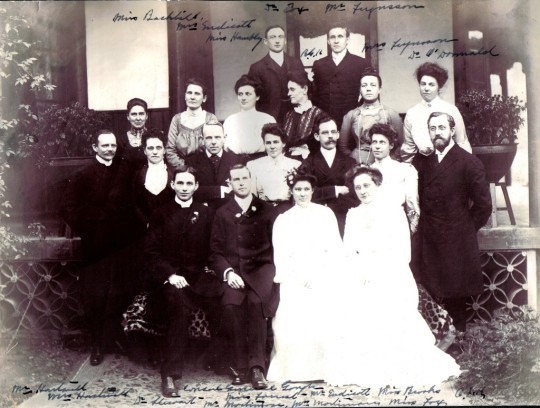
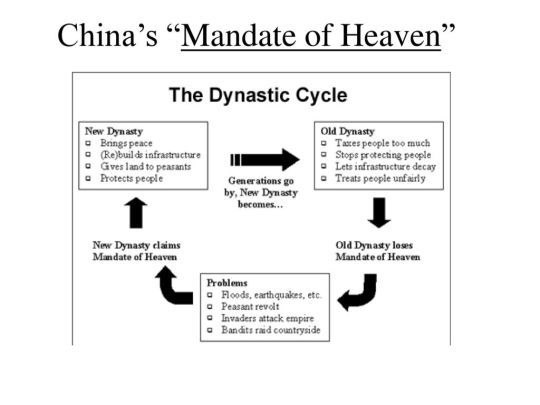

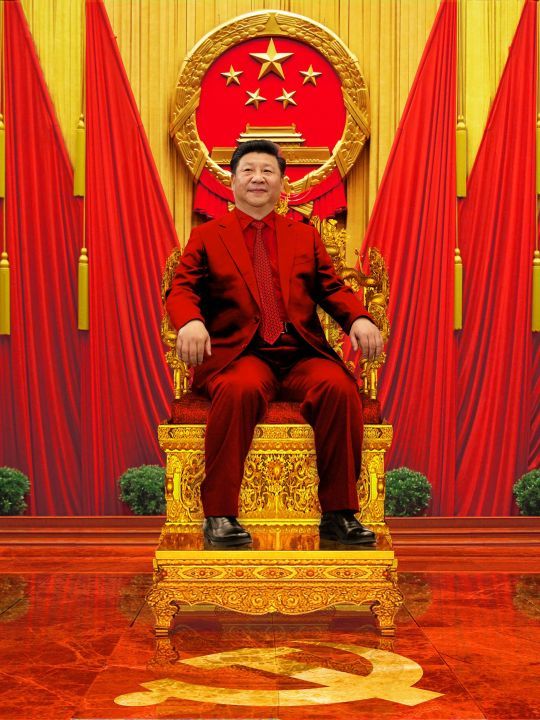
#taipingrevolt#boxerrebellion#mandateofheaven#8banners#tangsoodo#martialarts#kungfu#shaolintemple#josshouse#chewkeejossstore#courttranslator#puplfiction#journalism#tonggangwars#wahkeelaundry#opiumden#dynasticcycle#rise&fallofcommunism
1 note
·
View note
Video
Ya en iPauta.Com el álbum de @lonelez - #TrapScores (Vol. 1) Búscalo Ya! Feliz Cumpleanos #LoneLez #iPauta #Reggaeton #Trap #Ennio #JamesBond #JasonBourne #MovieMaterial #PuplFiction #StarWars #PirateofCaribbeans #FantasticBeats
#ennio#starwars#reggaeton#puplfiction#trapscores#ipauta#jasonbourne#fantasticbeats#pirateofcaribbeans#moviematerial#trap#lonelez#jamesbond
0 notes
Photo


sunday listenings 🎶
0 notes
Photo

That’s when you know you’ve found somebody special. When you can just shut the fuck up for one minute and comfortably enjoy the silence.
0 notes
Photo

#tripod #foto #śnieg #puplfiction #photooftheday
0 notes


